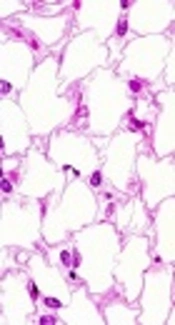Mesenchymal stem cells (MSCs) are the proper hotspot for the regeneration of tissues due to of self-renew and multi-potent differentiation properties. Furthermore, adipose derived stem cells (ADSCs) are multi-potent stem cells assigned to the generic nomenclature (1) and can easily be isolated from subcutaneous liposuction. These are the foremost advantages of ADSCs compared to other stem cells sources. In addition, these cells have no ethical and political issues compared to embryonic stem cells. They make ADSCs become more acceptable for tissue and organ transplantation in regenerative medicine and clinical studies (2).
There are some cell surface markers used to characterize ADSCs, using flow cytometry, however, a unique single marker has yet to be identified. It is positive at the first passage of culture expression of ADSCs for CD34, however, the expression for hematopoietic antigens such as CD14, CD31, CD45 and CD144 is negative (3).
For in vitro purpose, it takes 2 to 5 days for cultured ADSC to double. Under specific culturing conditions, ADSCs differentiated into multiple cells such as chondrocytes, myocytes, adipocytes, osteoblast, and neural cells; therefore, it makes these cells proper for multiple clinical applications (4).
Nowadays transplantation of ADSCs is used in researches that focus on therapy of a variety of diseases including diabetes, trauma (5, 6). Additionally, differentiation into neural cells made these cells appropriate for treatment of neurodegenerative diseases (7). For example, Parkinson disease (PD) is the second most common progressive neurodegenerative disorder in the world and transplantation of dopaminergic neurons open the windows to the recreation of the nigrostriatal pathway and treatment of PD; therefore, the first step in therapy is a production of functional dopaminergic neurons (8). In ischemic tissues, mature adipocytes die easily, however, ADSCs survive in this condition and can secrete angiogenic factors (9, 10).
On the other hand, ADSCs implantation also supports cell attachment, proliferation, and differentiation in the specific clinical application and can be used in wound healing applications. Some researches have been shown that grafted an acellular dermal matrix construct seeded with human ADSCs into a murine injury model can enhance the wound healing at day 7 (11, 12).
Another potential of ADSCs is the osteogenic application, for example, bone tissue regeneration after injection or congenital malformations. For purpose of bone growth, many in vivo studies have combined ADSCs with biodegradable scaffold materials (13). In examining ADSCs for the cartilage tissue, the engineering is required to remedy osteoarthritis (OA) (14, 15).
Finally, multiple growth factors are secreted by ADSCs, for example, basic fibroblast growth factor (bFGF), vascular endothelial growth factor (VEGF), insulin-like growth factor 1 (IGF), hepatocyte growth factors (HGF), and transforming growth factor (TGF)-β1. Some evidence has been shown the protective roles of these factors are secreted by ADSCs on epithelial cells and prevent cell death during oxidative injury (16).
At the result, these features of ADSCs made them suitable for research on treating various diseases and ultimately, these efforts can lead to widespread clinical applications of these cells.
